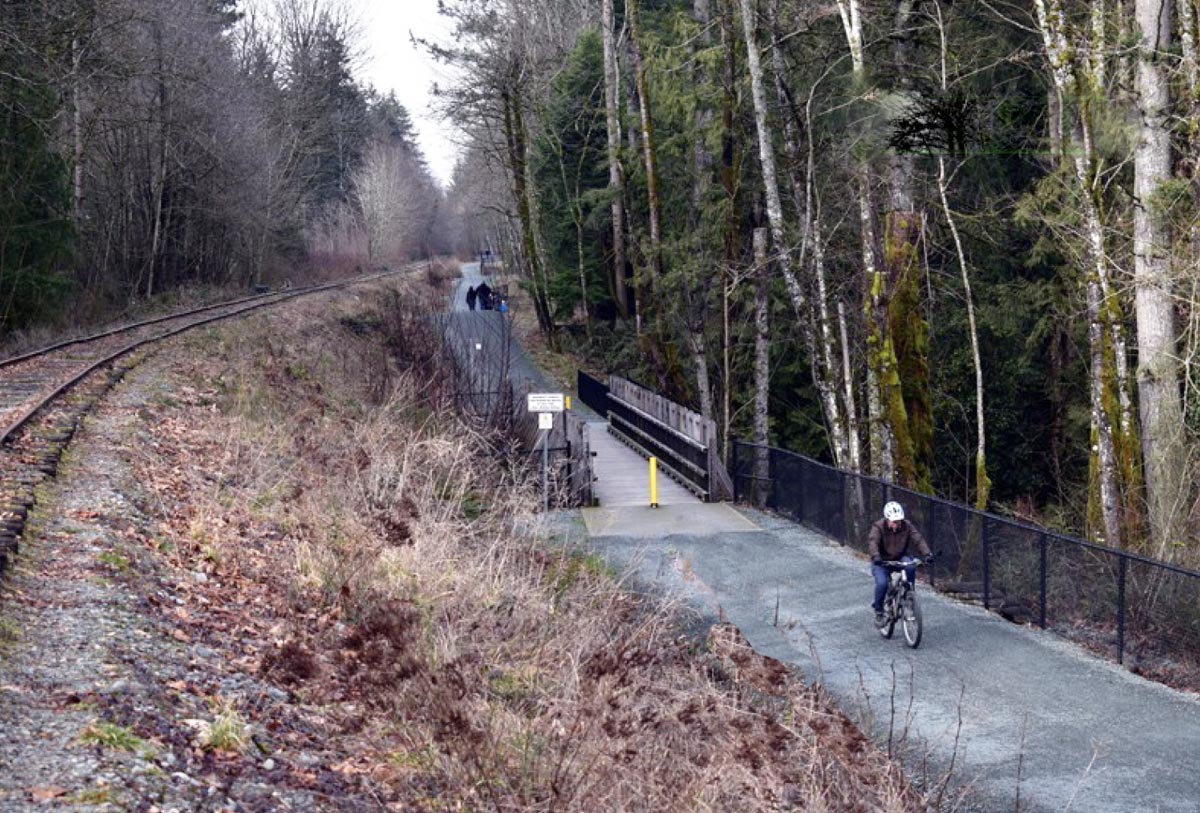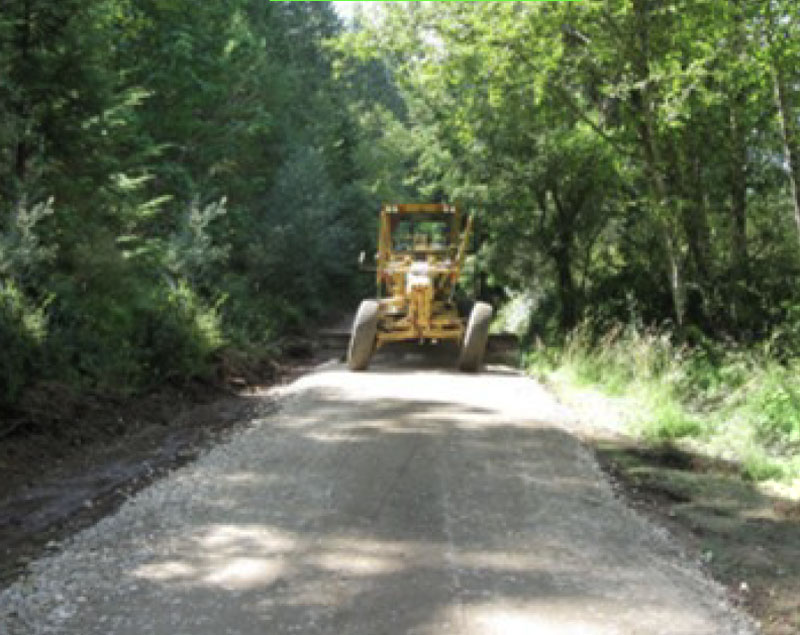Loon Lake, Mt Arrowsmith E&N (Photo: Kiwibirdman CC BY 3.0)
Study after study demonstrates the ecological, economic and health benefits of active transportation

A hub for active transportation
The trail will be an active transportation spine, with which local trails and bike paths would connect. Why not have rail with a trail?

A safer alternative
Recreational, tourist and commuter users will be able to walk or ride in a safe, quiet, accessible environment. With the boom in e-bikes, there is increased demand for longer, enjoyable rides, whether commuting or recreating.

Positive economic footprint
A 2023 report shows the trail will "become a popular outdoor recreation destination [that will] attract users from all provinces and from other countries." Rather than drain millions in public funds, the trail will add to them. Local small businesses will benefit. First Nations in other parts of Canada have benefited economically and culturally from the opportunities trails provide.
The many trestles and bridges on the Island Corridor could be like the Kinsol Trestle, very popular among locals and tourists. Specifically the Niagara Creek and Arbutus Creek trestles, among others, would become highlights and draws for tourists.

Preserves the corridor
Across North America, rail lines are being divided and sold, removing the possibility for them to provide uninterrupted transportation in the future. A continuous trail preserves the E&N Corridor for future generations at minimal expense. At the same time, we acknowledge that the entire Corridor passes through unceded First Nations territory and 2% of the track (6 km) passes directly through First Nations reserves. FORT-VI is dedicated to working with local First Nations to create economic opportunities along a future trail, or would support re-routing the trail around reserve land, if necessary.

Best for the environment
Once constructed, a multi-use trail has no added carbon emissions from motorised transport and creates a more natural environment for the enjoyment of all. The overall carbon burden of the trail is minimized by using natural materials like crushed stone for trail construction.

Positive health benefits
A 2023 feasibility study of the trail found that "well-planned, connected and accessible active transportation systems influence our health by increasing our physical activity, improving air quality and reducing vehicle injuries." Both physical and mental health will be boosted by a continuous Corridor trail.
Advantages for Residents
- Locals would use the trail for commuting and/or pleasure, while avoiding the hazards, congestion and noise of the road.
- Cyclists could safely travel to and between local communities for shopping, work or pleasure.
- Local businesses and First Nations could benefit from tourism traffic on the trail.
- Less noise and emissions pollution for people who live along the E&N corridor.
Advantages for Tourists
- The trail would be a drawing card for national and international tourists as the trail would link communities and tourist attractions up and down and across Vancouver Island.
- Studies estimate approximately $100m in annual economic benefit to Vancouver Island.
- Existing train stations could be made into information booths giving directions to local attractions and accommodations.
The opportunities associated with a continuous active transportation trail up and down and across Vancouver Island are tremendous. Construction will be simple and affordable. Residents, First Nation communities and local businesses could prosper from the trail. BC Transit’s Low Carbon Fleet Program will reduce the carbon footprint and improve public transit on Vancouver Island. Let’s not miss the opportunities and benefits to be had by turning the inactive Island Rail Corridor into a multi-use trail that connects Vancouver Island.


